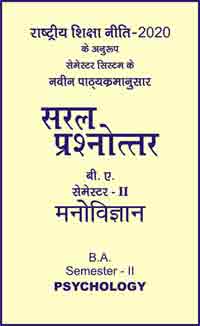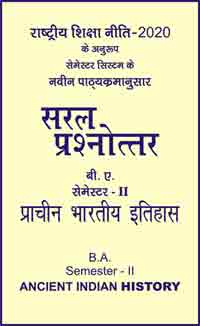|
बी काम - एम काम >> बीकाम सेमेस्टर-2 फण्डामेन्टल्स आफ ई-कामर्स बीकाम सेमेस्टर-2 फण्डामेन्टल्स आफ ई-कामर्ससरल प्रश्नोत्तर समूह
|
5 पाठक हैं |
||||||
बीकाम सेमेस्टर-2 फण्डामेन्टल्स आफ ई-कामर्स - सरल प्रश्नोत्तर
Question- Write a short note on traditional Commerce Vs. E-commerce?
Ans.
Traditional Commerce Vs. E-commerce
Traditional commerce involves a great number of processes in addition to buying and selling transactions. Traditional Commerce is more than just the trading transactions, it involves a variety of process. From the buyer's perspective it starts with the urge to accuire product, service or information. During the information exchange phase, customers may negotiate prices, quantity. Payment terms, delivery and aftersales support terms. From the manufacturer's and dealer's perspective commerce entails the design, manufacturing, marketing, distribution and delivery of products.
E-commerce is a system that combines the resources of information system with the reach of network connectivy to directly link the key business constitutions-to improve the efficiency of the structures and elements. E- commerce has a broader perspective than just the buying and selling over the network. E-commerce is defined as buying and selling of products and services over the Internet. It also includes the handling of purchase transactions and funds transfer over computer networks. Buying and selling of new commodities such as electronic information is also referred as electronic commerce. E-commerce is defined as online shopping, on-line buying of stocks, bond transaction and downloading of software without ever going near a store. It includes business-to-business connections that make purchasing easier for big corporations. The various products sold through e-commerce are computer products, consumer products, books, magazines, music and entertainment products.
Differences between Traditional Commerce and E-Commerce
| Sl. No. | Basis of Difference | Traditional Commerce | E-Commerce |
|---|---|---|---|
| 1 | Communication | Manual intervention required; done synchronously | Electronic system handles asynchronously |
| 2 | Sharing of Information | Heavy dependency on person-to-person exchange | Uses digital platforms; quicker and more consistent |
| 3 | Launching a New Product | Time-consuming and costly; needs physical testing and customer feedback | Faster, feedback via website; easily redefined |
| 4 | Suitable Product | Suitable for perishables and 'touch and feel' items | Suitable for durable goods, high-value items like electronics, books, tickets, etc. |
| 5 | Process | Manual processing; prone to clerical errors | Automated; minimizes clerical errors |
| 6 | Saving in Cost | Higher overhead due to middlemen, physical branches | Cost-effective; reduced overhead, single office setup |
| 7 | Profit | Lower profit due to middlemen, overheads, inventory | Higher profit through streamlined operations |
| 8 | Accessibility | Limited to regional to national expansion | Easy global reach; expands market access |
| 9 | Time in Completing a Transaction | Takes longer | Faster completion of transactions |
| 10 | Time of Service | Limited business hours | 24×7 availability |
| 11 | Convenience | Less convenient; customer has to travel | Highly convenient; shopping from anywhere via internet |
| 12 | Interaction of Customers | Face-to-face interaction | Electronic interaction through digital platforms |
| 13 | Standard Practices | Difficult to standardize | Easily standardized |
| 14 | Fraud | Less fraud due to physical presence | More prone to fraud due to anonymity, lack of physical presence, and possible loopholes |
|
|||||













